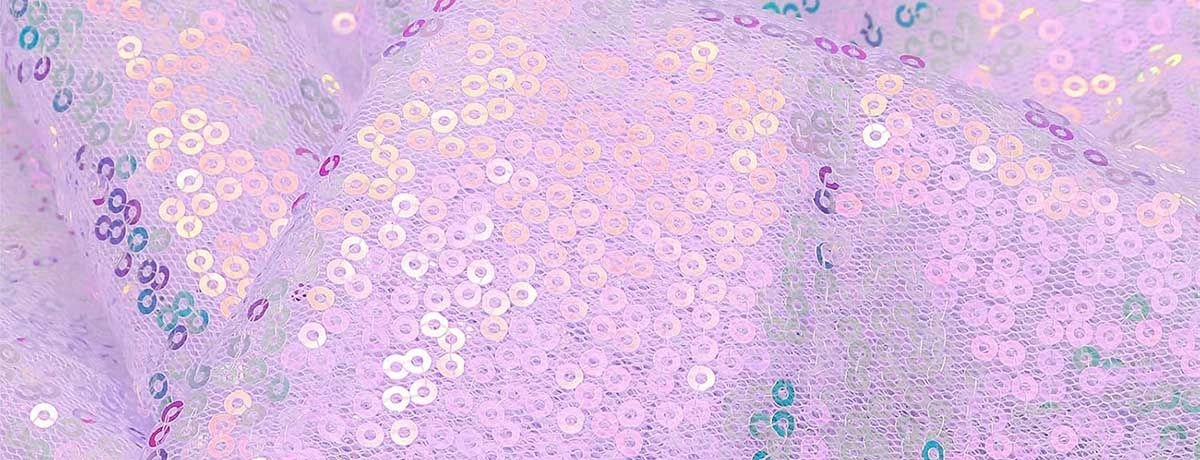Reversible Sequin Fabric: A Game-Changer for Manufacturers

Reversible sequin fabric represents a significant innovation in textile manufacturing, offering manufacturers and wholesalers a versatile material that delivers dual design possibilities in a single product. This specialized fabric features shiny, reflective sequins that can be brushed or flipped to reveal contrasting colors or finishes, creating dynamic visual effects that appeal to diverse consumer markets. Black is a popular and versatile color choice for reversible sequin fabric, often paired with other vibrant shades for bold, eye-catching results.
Reversible sequin fabric serves as a source of inspiration for designers and makers, sparking creative ideas for unique fashion, décor, and craft projects.
When you run your hand over the fabric, you can flip the sequins to instantly change the design or create patterns, making the experience interactive and playful.
The feel of reversible sequin fabric is an important consideration, as the texture and comfort can impact the suitability of the material for different end products.
Types of Reversible Sequin Fabric
The market offers several distinct categories of reversible sequin fabric, each engineered for specific applications:
Color-Change Sequins: Feature contrasting solid colors on each side, allowing for dramatic color transitions when manipulated.
Matte-to-Shine Variations: Combine matte finishes with metallic or iridescent surfaces, providing texture variation alongside visual appeal.
Multi-Tonal Options: Offer subtle gradations between similar color families, delivering sophisticated design flexibility.
Reversible sequin fabrics are available in a wide range of sizes and shapes, including round, square, and specialty forms, which influence the texture, shimmer, and overall look of the fabric for different fashion, décor, and costume projects.
The base materials typically include polyester, nylon, or cotton blends, with sequin attachment methods varying from traditional stitching to advanced adhesive technologies. Reversible sequin fabric is often sold by the yard or in rolls, making it easy to order the right amount for any project. Due to high demand, certain colors or styles may be low in stock, so customers should order promptly to secure their preferred options.
When working with sequin fabric, careful cutting techniques are essential. Use sharp scissors to cut cleanly through the material and avoid damaging the sequins, as proper cutting helps maintain the fabric's appearance and prevents unnecessary mess.
Sequin Fabric Manufacturing Applications
Reversible sequin fabric is a great choice for a wide range of applications and serves multiple production segments:
Apparel Manufacturing: Evening wear, children’s clothing, performance costumes, and casual fashion items benefit from the interactive nature of this material. Reversible sequin fabric is perfect for making party dresses and skirts, adding sparkle and visual interest to any wardrobe.
Accessories Production: Handbags, shoes, and jewelry components utilize reversible sequins to create products with dual aesthetic personalities. Bags, such as tote bags and clutch bags, are also popular items made with this fabric, making accessories both stylish and unique.
Home Decor Manufacturing: Pillow covers, curtains, and upholstery applications leverage the fabric’s ability to transform living spaces with simple manipulation. Pillows, in particular, benefit from the visual appeal and customizable designs that reversible sequins offer. Additionally, this fabric is perfect for event decor, such as tablecloths and backdrops for parties and weddings, making any event more memorable.
Reversible sequin fabric makes products stand out and adds a fun, interactive element, making it perfect for both fashion and decor projects.
Production Considerations
Manufacturing with reversible sequin fabric can be time-consuming and requires patience and attention to detail, as it involves specific technical approaches:
Machine Selection: Standard sewing machines handle most applications, though walking foot attachments prevent sequin damage during production. It is important to remove sequins from seam allowances before you sew to prevent needle breakage and ensure smooth stitching.
Seam Finishing: French seams and bound edges protect sequin integrity while maintaining professional appearance standards. Adding a lining provides comfort and a neat finish, preventing scratchy sequins from irritating the skin. Seams should be sewn securely to keep sequins in place and maintain garment durability.
Pressing Techniques: Low-temperature settings with protective pressing cloths prevent sequin melting and maintain fabric structure. Pressing should be done after all pieces are sewn together.
Quality Control: Regular inspection during production identifies loose sequins or attachment issues before final assembly. Take time to check that all sequins are securely sewn and that each piece meets quality standards.
Closures: When adding closures such as a button to sequin fabric garments, consider the fabric thickness and placement. You may need to remove sequins from the area where the button will be attached to ensure it is sewn on securely and sits flat.
Market Advantages for Pillows
Reversible sequin fabric offers manufacturers distinct competitive benefits. The dual-functionality reduces inventory requirements while expanding product versatility. Consumer appeal remains consistently high across demographic segments, from children drawn to interactive elements to adults seeking sophisticated design options.
The material’s durability, when properly sourced, ensures long-term customer satisfaction and reduces return rates. Production efficiency improves as single fabric types serve multiple design applications. New reversible sequin fabric designs regularly enter the market, keeping product lines fresh and appealing. When purchasing, be sure to check for available coupon discounts or promotional offers to maximize your savings.
Maximizing Material Potential
Reversible sequin fabric transforms traditional manufacturing approaches by combining functionality with visual impact. Manufacturers who integrate this material into their product lines gain access to expanding market segments while streamlining inventory management. The technical considerations, while specific, remain manageable with proper equipment and procedures, making this innovative fabric an accessible option for diverse production environments.
Contact MH
MH offers sequin fabrics. Please contact us for more details or inquiries. We're here to help!


